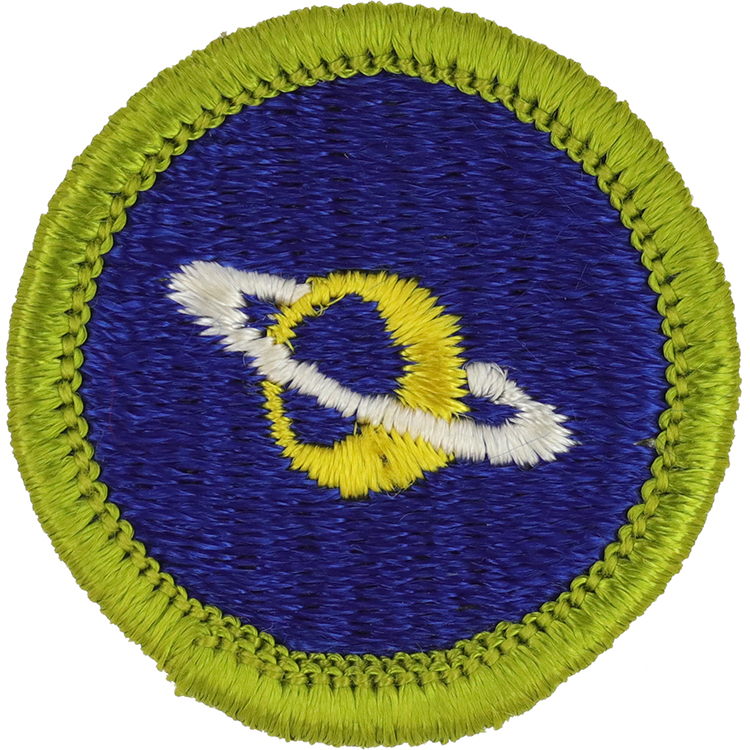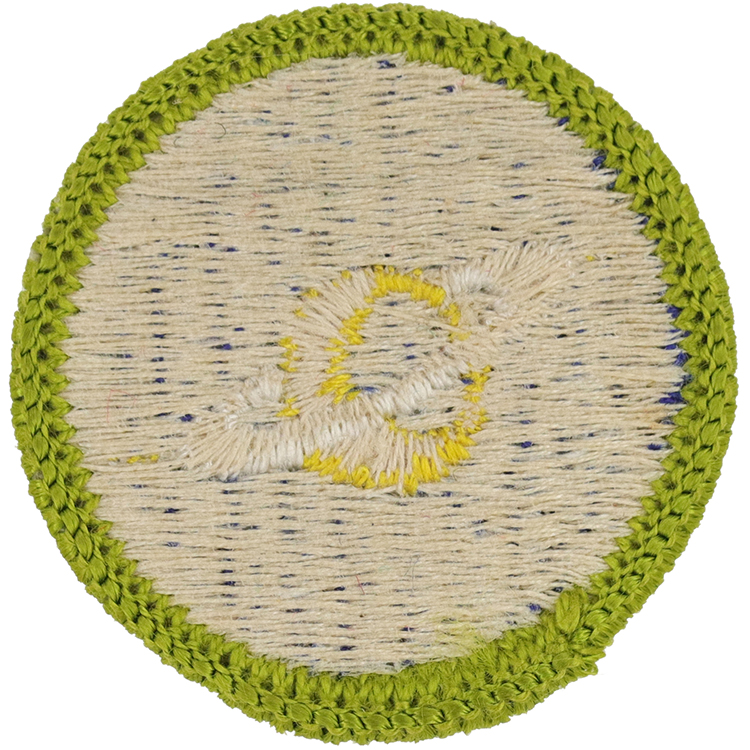
Fig. 1: Astron-G-Front
- Embroidery: Cotton thread
- Border: Merrowed

Fig. 2: Astron-G-Reverse
- Back: Starched cloth
Item Name: Astronomy 1961 - 1972
Item ID: Astron-G
Collector Rating: 1
Requirements February 1960 until December 1966
1. Identify in the sky: (a) ten conspicuous constellations, including at least four in the zodiac; (b) at least eight first-magnitude stars.
2. Chart the position of Venus, Mars, or Jupiter among the stars over a period of four or more weeks, or chart the Moon’s path through four constellations in the zodiac.
3. Sketch the position of the Big Dipper and its relation to the North Star and the horizon early some evening and again six hours later the same night. Record the date and hour of the making of each sketch.
4. Indicate in the sky the limits of the group of stars which, as seen from your latitude, never set. By your own observations determine whether the Big Dipper or Cassiopeia ever set.
5. Draw a diagram showing the relation of the Sun, Moon, and Earth at new Moon, first quarter, full Moon, and last quarter. Draw a diagram showing the relation of the Sun, Moon, and Earth at an eclipse of the Sun, and another for an eclipse of the Moon.
6. Explain the principal cause of the tides. Draw a diagram showing the relation of the Sun, Moon, and Earth when we have the highest tides and the lowest tides.
7. Explain the principal difference between a reflecting and refracting telescope. Illustrate by simple diagrams.
* 2nd Class Scouts must first complete First Class requirement # 2b
2. LAY OUT YOUR CAMP
b. Directions -- Lay out on the ground a magnetic north-south line using a compass and a true north-south line with the help of the sun by day, the North Star by night.
Requirements December 1966 until June 1972
1. Sketch the position of the Big Dipper and its relation to the North Star and the horizon early some evening and again 6 hours later the same night. Record the date and hour of the making of each sketch.
2. Indicate in the sky the limits of the group of stars which, as seen from your latitude, never set. By our own observations determine whether the Big Dipper or Cassiopeia ever set.
3. Identify in the sky:
(a) Ten conspicuous constellations, including at least four in the zodiac.
(b) At least eight first-magnitude stars.
4. Chart the position of Venus, Mars, or Jupiter among the stars over a period of four or more weeks or the Moon’s path through four constellations in the zodiac.
5. Draw a diagram showing the relation of the Sun, Moon, and Earth at new Moon, first quarter, full Moon, and last quarter. Draw a diagram showing the relation of the Sun, Moon, and Earth at an eclipse of the Sun, and another for an eclipse of the Moon.
6. Explain the principal cause of the tides. Draw a diagram showing the relation of the Sun, Moon, and Earth when we have the highest tides and the lowest tides.
7. Explain the principal difference between a reflecting and refracting telescope. Illustrate by simple diagrams.
* 2nd Class Scouts must first complete First Class requirement # 5
5. Point out in the sky the North Star and at least five constellations.



